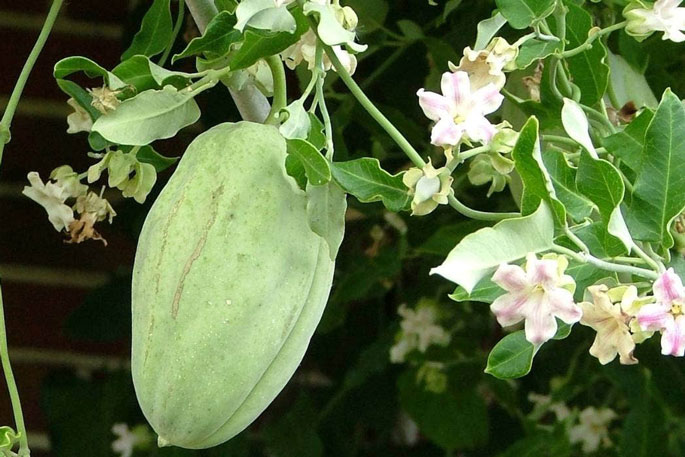Kiwis are being urged to rid their homes of the 'invasive” moth plant as soon as it makes an appearance, to stop the perennial vine from smothering native and exotic trees.
Northland Regional Council says moth plant is one of the region's worst weeds, popping up along roadsides, forest edges, coastal sites, urban reserves and gardens – where it can grow to a whopping 10 metres tall.
Moth plants can be identified by their white flowers, which appear in January and turn into large hanging kapok-type pods, which split open to release hundreds of seeds with silky threads. These seeds, which are poisonous to humans, are then lifted by wind and carried to new sites.
'It's best to tackle the plant now as it is easy to see, before those pods ripen and burst over the next few months,” says Northland Regional Council's Biosecurity and Biodiversity Working Party chair Jack Craw.
Not only does the plant pose a threat to New Zealand's native landscape, it traps monarch butterflies, who drink from the flowers, leading to their eventual starvation and death.
As well as being poisonous to humans, the pods and stems also contain a milky sap, which is a skin irritant and can cause allergic reactions. This means it is important to wear gloves while doing damage control.
Craw said if the plants are caught early enough, small moth seedlings can easily be pulled out, but as the plants grow, they become hartder to remove.
'The options to control moth plants include spraying or removing them by hand, and collection of mature seed pods – which unfortunately can be quite labour-intensive,” Craw said.
Moth plant is not just causing problems in Northland – infestations have emerged in Auckland, northern Waikato and Bay of Plenty, with a few in the South Island as far south as Christchurch.
In Auckland, there is even a dedicated group of volunteers who work to stamp out the plant, aptly named Society Totally Against Moth Plant (Stamp).
'It is very common to see ripped up moth plant vines left on the footpath to dry in the sun thanks to the activities of Stamp,” said Quentin Paynter, a senior researcher at Manaaki Whenua/Landcare Research.
'There is quite an army of volunteers controlling it, and it would undoubtedly be a lot worse without their efforts.”
Paynter said despite the overwhelming amount of issues caused by the plant, 'there is help on the way”, in the form of a root-feeding beetle.
'Despite the disruptions caused by Covid-19, field releases have already commenced, and the beetle has already established in Northland,” Paynter said.
'It usually takes a few years for biocontrol agent populations to build up enough to control their target weeds, but we are quietly confident about this one because the beetle larvae can be very damaging to moth plant.”
Paynter said an application to release a second agent – a fruit fly that turns the contents of the pods to mush – is currently being prepared for submission to the Environmental Protection Authority.



1 comment
Insanity.
Posted on 29-01-2022 17:32 | By morepork
When did introducing a species to control another species ever produce a good outcome? It can ONLY work for a limited time in a tightly controlled area. How did moth plant get established in the first place? Attack it at source and destroy found plants. Don't mess with the balance of Nature.
Leave a Comment
You must be logged in to make a comment.